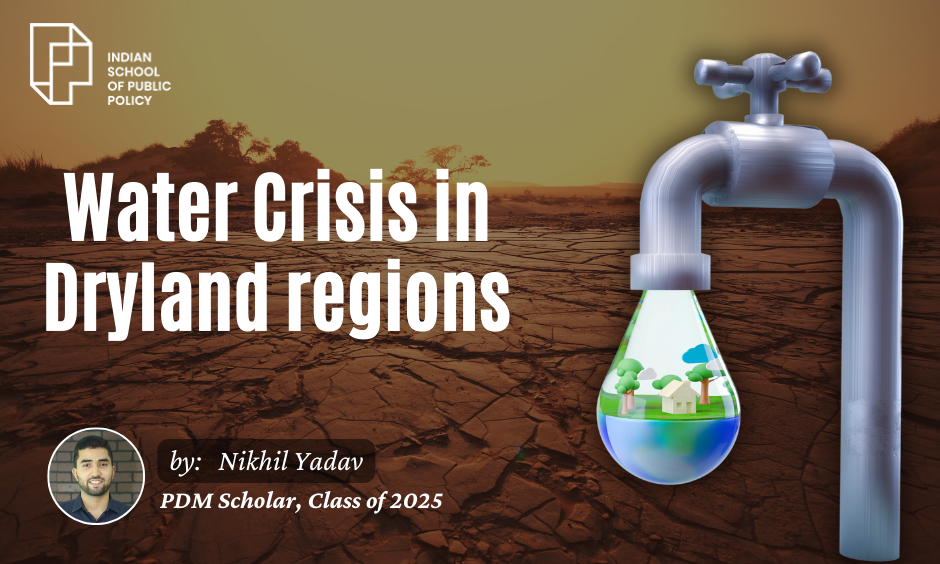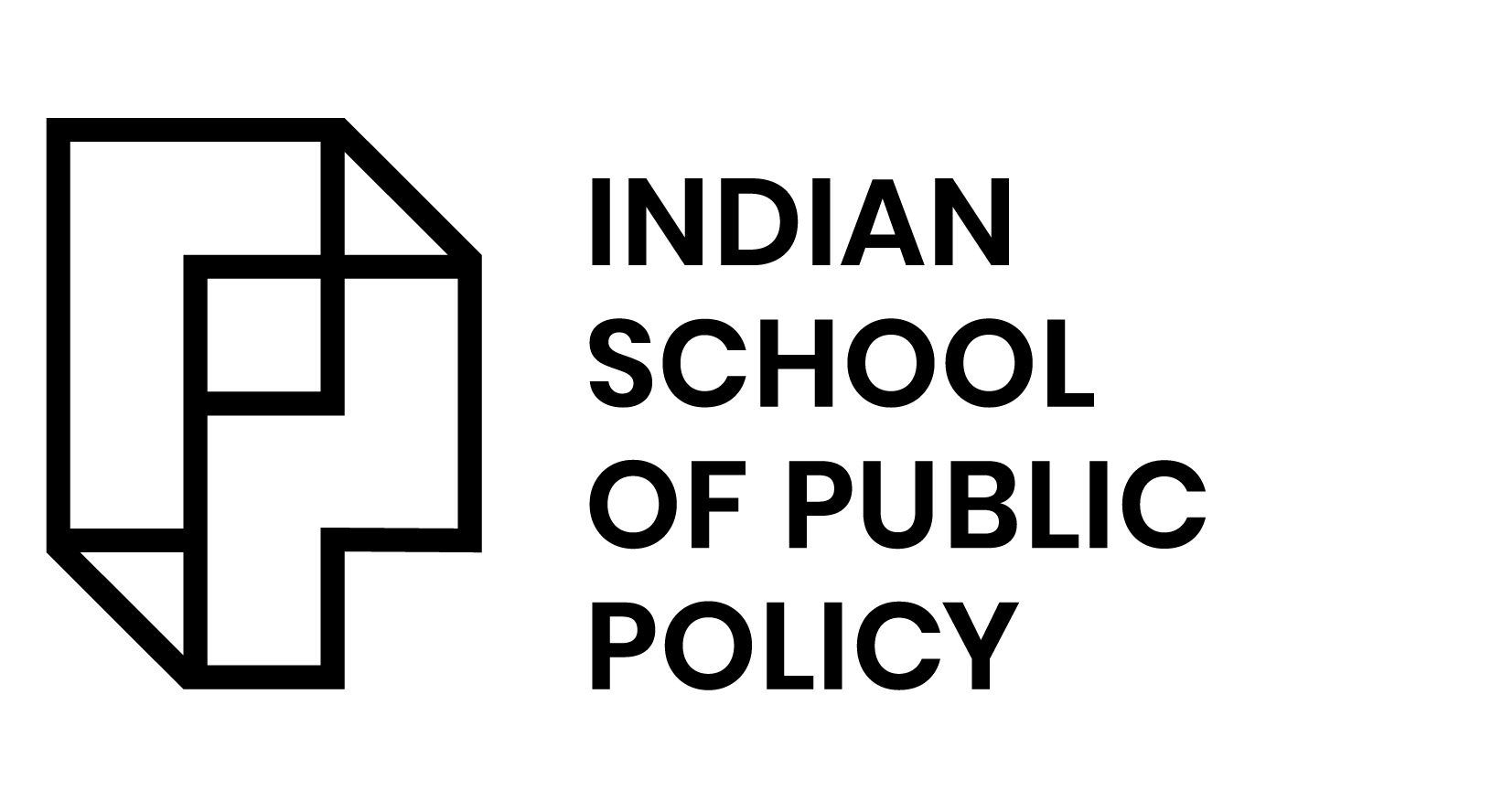
Water Crisis in Dryland regions

In the 1960s India was reeling under immense food scarcity. Frequent famines and low agricultural productivity created a terrible situation in feeding our growing population. Under the PL480 programme of the US, India imported food grain to meet the deficiency in food production. But a lot of things changed in the next decade. The Green Revolution, a set of initiatives designed to revitalise agriculture, transformed India from a food-dependent nation into a food-exporting one. The introduction of High Yield Variety [HYV] seeds, increased land under cultivation, led food production to rise from 50.82 million tonnes in 1950 to 350 million tonnes in 2021 [Press Information Bureau].
However, everything was not great about the Green Revolution. The groundwater levels have gone down to miserably low levels in dryland regions. Further policies like MSP, initially introduced to provide price support to farmers in ‘distress years’, has become a bane. Higher MSP on water-guzzling crops like wheat and rice incentivised farmers to produce these crops. Ill anticipated outcomes like aggravated water scarcity in dryland regions became a poor consequence. Paddy in Punjab, for instance, reflects the negative impact of unsustainable crop planning on agriculture-groundwater nexus in India (Gulati and Mohan, 2018).
Traditionally, in these arid and semi-arid regions India has grown crops like millets including Bajra, Jowar, and factors like water availability and agricultural sustainability were considered in the cropping pattern. The problem started when the cropping patterns were significantly altered. With the advent of the Green Revolution the dominance of crops like rice, wheat, and sugarcane began. India had the highest export volume of rice worldwide, at 16.6 million metric tons. The amount of water applied to produce 1 Kg of rice ranges from 800 to 5000 liters, with an average value of about 2500 liters [National Rice Research Institute]. Hence, with water-intensive cropping, the water tables were badly affected.
Potential solution to this present grim situation is promotion of Dryland agriculture. Dryland agriculture is a farming technique in which farmers cultivate crops like pearl millet, sorghum that are drought tolerant and practice water harvesting in arid to semi arid regions. In the context of the water crisis and uncertain rainfall patterns, the importance of Dryland agriculture, which constitutes 68% of India’s cultivated land, and produces 44% of the country’s total food production, is even more important. (Sekar & Kaviyazhagan, 2024).
Certain policy recommendations for the same are:
1. We need to select an appropriate cropping system according to agro climatic regions. With dryland regions devoid of much moisture in the soil, monocropping based on rice and wheat is a big no. The need is to go for diversification of cropping patterns that includes maize, bajra, horticultural crops that can adapt well to the regions. For instance, Rajasthan’s government efforts to encourage farmers to grow crops like Olives, Strawberries has resulted in a net positive result for the region. It would make agriculture more environmentally friendly but also make dryland farming more profitable.
2. Policy intervention should focus on developing and promoting Disease resilient, climate-resilient seeds that have high productivity in the region. These seeds via a decentralized seed distribution system can be a big boost in promoting rainfed agriculture. Institution wise, Community Seed Banks [CSBs] in rural areas can provide affordable seed to the small and marginal farmers.
3. Dryland states must allocate dedicated funding within their schemes specifically for Agroforestry. Trees act as windbreaks, reducing evaporation and helping maintain soil moisture. With more timber, fruits agroforestry helps in not just high income but also improves soil health and crop yield. High and semi-arid regions have substantial evaporation. Initiatives that promote mulching with organic materials [dry leaves, weeds etc] can provide considerable benefits in reducing losses. The practice also suppresses weed growth, prevents erosion and adds organic matter to the soil. A 2014 study by the World Agroforestry Centre estimated that trees are present on over 1 billion hectares of agricultural land worldwide, covering more than 46% of all agricultural areas. This integration enhances biodiversity, improves soil fertility, and contributes to carbon sequestration.
4. Technological intervention in dryland regions can be a gamechanger. India needs to upscale its efforts in Micro irrigation, rainwater harvesting and Watershed management. With 52% of our land being rainfed and 90% of their annual precipitation in large areas of western and central India occurring from June-September, it is imperative to save water during these months.. However, the challenge in Micro irrigation that remains here is the protection of pipes & distributors and also timely maintenance of the drip system. The state government’s role in this regard is to provide subsidies and tax breaks to manufacturers and operators, especially in dryland states.
5. The recently proposed National Policy on Farmer Producer Organisation [FPO] by the Ministry of Agriculture and Farmers Welfare to scientifically and systematically consolidate existing FPOs, and establish 50,000 FPOs is a step in the right direction. With 85% of farmers being small and marginal Farmers Producing Organisation [FPOs] can increase bargaining powers, help access credit and bridge information asymmetry. Making farmers as entrepreneurs in the dryland regions shall be the key for revival of the rural economy. The government’s target of formation and promotion of 10k FPOs by the end of FY25 is a promising one. Organized businesses with the farmer can help us achieve the true spirit of Green Revolution with inclusivity and sustainability as desired objectives.
Green Revolution transformed India‘s agriculture but used water unsustainably. To address this, Dryland Agriculture must be promoted through diversified cropping, resilient seeds, agroforestry, and advanced irrigation. Strengthening Farmer Producer Organizations (FPOs) can empower small farmers and enhance sustainability. A region-specific approach, integrating modern techniques with traditional wisdom, is essential for long-term agricultural resilience. Balancing food security with environmental sustainability will ensure a productive and water-efficient future for Indian agriculture.
Register your Interest to Study at ISPP
References:
- Gulati, A., & Mohan, G. (2018). Towards Sustainable Productive and Profitable Agriculture: Case of Rice and Sugarcane. ResearchGate. https://www.researchgate.net/publication/328528710_Towards_Sustainable_Productive_and_Profitable_Agriculture_Case_of_Rice_and_Sugarcane/link/5bd28b794585150b2b876c8e/download?_tp=eyJjb250ZXh0Ijp7ImZpcnN0UGFnZSI6InB1YmxpY2F0aW9uIiwicGFnZSI6InB1YmxpY2F0aW9uIn19
- Sekar, M., & Kaviyazhagan, K. (2024). DRYLAND AGRICULTURE. ResearchGate. https://www.researchgate.net/publication/377223174_DRYLAND_AGRICULTURE#:~:text=Dryland%20agriculture%20makes%20up%2068%25%20of%20India%27s%20cultivated,and%20is%20essential%20to%20the%20country%27s%20food%20security
- (PDF) Trees on farms: an update and reanalysis of agroforestry’s global extent and socio-ecological characteristics

Nikhil Yadav
PDM Scholar, Class of 2025
Nikhil Yadav is a distinguished scholar in the field of Public Policy in India. He holds a Bachelor’s degree in Economics (Honours) from Delhi University. His research primarily focuses on environmental issues, with a broader interest in the development sector. Nikhil has notable experience in political consulting, having worked with a leading political party in India. With over three years of experience in civil service preparation, he has gained significant insights into the shaping of public policy in India. His hands-on experience and academic background make him a valuable contributor to the discourse on sustainable development and governance.
Linkedin: https://www.linkedin.com/in/nikhil-yadav-69882927a/


